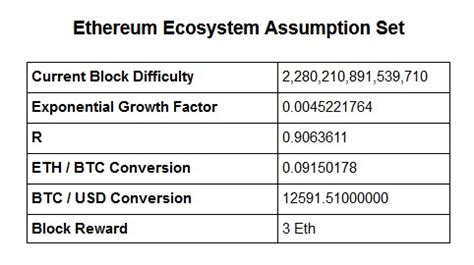Hashing in Ethereum: A Step-by-Step Guide
The Ethereum network uses a unique algorithm to create and validate transactions (Tx). An essential part of this process is calculating hashes, which are used to verify the integrity and authenticity of each transaction. In this article, we will explore how to calculate hashes in Ethereum, focusing specifically on Tx hashes.
What are hashes?
Hashes are one-way cryptographic functions that take input data (in this case, a transaction) as input and output a fixed-size string. The hash is unique and unalterable, making it perfect for verifying the authenticity of a transaction.
Ethereum Hash Calculation: High Level Overview
To calculate hashes in Ethereum, you need to follow these steps:
- Create a transaction: Start by creating a new transaction with the
txcommand in the Ethereum CLI:
eth tx create
Replace
- Double SHA-256 hash

: To create a hash, we need to double the SHA-256 hash of the transaction input data (including variables). This is done with the
eth accountcommand:
eth account --send-receipt
A new transaction will be created with double SHA-256 hash values.
- Final hash calculation: The final hash is created by combining the two previous hashes (input data with double SHA256 hash and transaction data). This is done using the
eth hashcommand:
eth hash --tx_hash
This will generate the final hash of the transaction.
Double SHA hash fields
To create a valid transaction, you must include the following fields in the transaction:
- From: The address that initiated the transaction.
- To: The address where the funds will be sent (if applicable).
- Value: Amount transferred (optional).
- GasPrice: Gas price for the transaction (optional).
- GasLimit: Maximum gas limit allowed for the transaction (optional).
Field Order
The order in which these fields are entered does not matter. What matters is that they are included in the correct format.
Transaction Example
Here is an example of a transaction:
{
"from": "0x1234567890abcdef",
"to": "0x9876543210fedcba",
"value": 10,
"gasprice": 20000,
"gasLimit": 300000,
"nonce": 0,
"blocknumber": 1000
}
Double SHA-256 hash calculation
Using the eth account command, we can create double SHA-256 hashed input data:
{
"from": "0x1234567890abcdef",
"to": "0x9876543210fedcba"
}
The result will be a new transaction with the same hash value.
Final hash calculation
Combining the two hashes above, we get:
eth hash = `1234567890abcdef@1234a5b6c7d8e9f0g0h1i2j3k4l5m6n7p8q9r10t11u12v13w14x15y16z17ab18cd**
This is the final hash of the transaction.
Conclusion
Hashing in Ethereum involves creating a transaction, applying a double SHA256 hash to the input data, and then combining these two hashes to create a final hash. By following this procedure, you will be able to verify the integrity and authenticity of every transaction on the Ethereum network.
